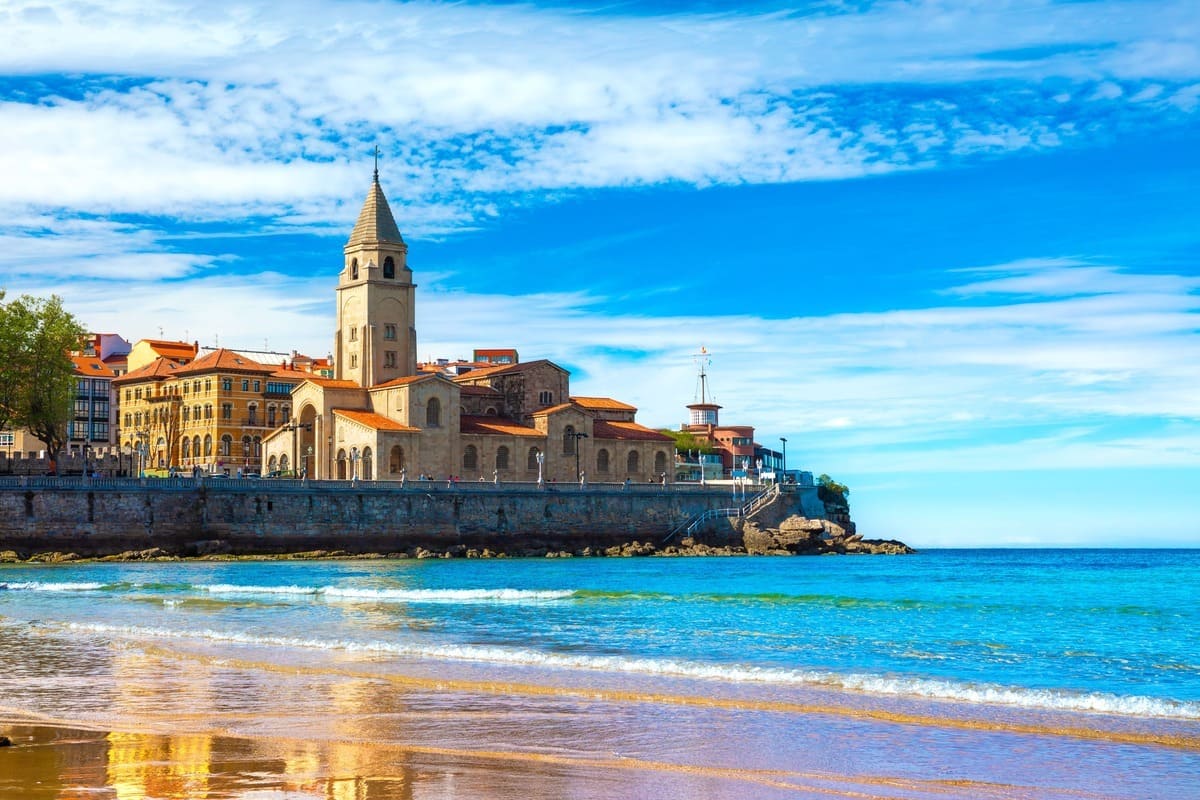[ad_1]
Dreaming of a sip of that frothy, pitch-black Guinness in a dimly-lit alley lined with pubs, to the sound of Gaelic buskers?
Or maybe exploring fairytale castles nestled deep in a verdant hinterland, where few have trodden before?
You know, the stuff of legendary kings and chivalric tales.

Ireland is calling, and it’s high time you answered in 2025, but if you think overtouristed Dublin is the answer to those cravings, we’d urge you to reconsider unless you’re ok with paying $10 or more for industrialized lager, and seeing more kebab shops per square mile than you would in Istanbul.
Looking for a truer, more authentic version of Ireland? You should head instead to the West Coast, that is in fact a shorter flight from America and away from the spoils of globalization:
Why Swap Dublin For The West Coast Of Ireland?
Though not that many U.S. travelers know this, Dublin is not the only airport they can fly to nonstop when planning an Ireland trip.

They can choose to land instead in Shannon Airport, which serves the West Coast, or how poets have called it over the centuries, the Wild Atlantic Way, where the drab suburbs give way to lush hills, moon-like landscapes, and castle-dotted rugged scenery.
We’ll get to those flights in a bit, but what is it about West Ireland, exactly, that makes it such a magical destination?
It’s only natural we start with Limerick, the largest city around these ends, and one that’s a short 25-minute drive from Shannon Airport.
Limerick

A large city in the Western half of Ireland, Ireland’s third-biggest, at that, Limerick is best-known for its charming Old Town, where stone-paved streets run along rows upon rows of Georgian-era houses, and the monumental King John’s Castle.
A 13th-century fortification, it is perched on the River Shannon waterfront, and it’s among Ireland’s most historically-significant sites, founded by Norman lords to defend the territory against native Gaelic uprisings at the time of Ireland’s conquest.
As a university city, Limerick is also known for its vibrant nightlife, and if you think Dublin’s Temple Bar is all the rage, wait until you’re walking up O’Connell Street, a main thoroughfare flanked by centuries-old pubs serving Guinness pints for €6.30, and where you can almost always find live music.

Charming Towns Galore
You didn’t just swap Dublin for yet another booze-filled city break: in order to truly take in the beauty of the West Coast of Ireland, you must take a ‘wee’ detour to some of its small villages, still preserving their Gaelic heritage, and full of Old World allure.
Think Adare, known for its thatched-roof cottages and medieval church; Doolin, a small, traditional Irish town with a big pub scene and friendly locals; or Kinvara, a fishing village revolving around a picturesque Dunguaire Castle.
The historic city of Galway, popular for its pub-packed Latin Quarter and scenic bay, is also a one-hour drive from Shannon Airport, and it’s often used by tourists as base for exploring the wider County Clare, home to some of Ireland’s most beautiful natural landmarks.

Beautiful Coastal Scenery
Speaking of nature, those who fly into Dublin and only stay locally are missing out on a number of Ireland’s most notorious gems: the West Coast’s pride and joy, the Cliffs of Moher, are a series of sea cliffs stretching for 5 miles, some rising 702 feet above the Atlantic.
Nearby, the Burren is Ireland’s moon-like, karst desert, resulting from rainwater slowly dissolving the limestone over thousands of years, and over in the Loop Head Peninsula, you’ll find more breathtaking cliffs, sandy beaches and the landmark Loop Head Lighthouse.
All of these spots are within easy access of large cities like Limerick and Galway by car, but if you’re not driving, there are countless companies taking visitors on full-day, guided tours of major attractions like the Cliffs of Moher, from as little as €50.

The West Coast Of Ireland Is Generally Cheaper Than Dublin
This ties into our next point: Dublin is infamous for being one of the most expensive destinations in Europe, where a pint of beer will cost upwards of €10, in touristy areas like Temple Bar, and the average price of a pub meal is €28 (as per Budget Your Trip estimates).
Out West, prices tend to be on the cheaper end, owing it to the off-path appeal of most of the region, and its rural character—expect to pay €10 to €20 for a typical pub meal, and between €5 and €7 for a pint of frothy Guinnnes.
As far as accommodation goes, Ireland is not exactly the most budget-friendly of destinations, though there are some good deals to be found, especially at the Old Quarter Townhouse in Limerick, where a single room will set you back by €125-a-night, or the Wards Hotel in Galway (€88).

Fly Nonstop From The U.S. To Shannon Airport
Onto those flights now: if you’re wondering how accessible the West Coast of Ireland is for Americans, it’s an even-shorter flight than Dublin, that sits on the East Coast.
Shannon Airport (SNN) is much smaller than Dublin Airport (DUB), so options flying there are more limited, but it still hosts flights from 4 major U.S. hubs:
- Boston (BOS)—1 flight per day with Aer Lingus
- Chicago (ORD)—1 flight per day with United
- Newark (EWR)—1 flight per day with United
- New York (JFK)—1 flight per day with Delta or Aer Lingus
Aer Lingus is the flag carrier airline for Ireland, and the average price for an Aer Lingus flight from New York to Shannon stars from only €521 round-trip.
Naturally, prices are based on season and seat availability.
As for the flight duration from the East Coast of America, from somewhere like Boston, it is as short as 5h50.
Ready For Your Trip? Check The Latest Entry Requirements For Your Destination Here
↓ Elevate Your Travel↓
Sign Up Now For Travel Off Path Premium! No ads, VIP Content, Personal Travel Concierge, Huge Savings, Daily Deals, Members Forum & More!

✈️Join Our Travel Off Path Community Forum: Where travelers unite, ask questions, share experiences and even find like-minded travel buddies!
SUBSCRIBE TO OUR LATEST POSTS
Enter your email address to subscribe to Travel Off Path’s latest breaking travel news, straight to your inbox.
This article originally appeared on TravelOffPath.com
Opinions expressed here are the author’s alone, not those of any bank, credit card issuer, hotel, airline, or other entity. This content has not been reviewed, approved or otherwise endorsed by any of the entities included within the post.
[ad_2]
Source link
















